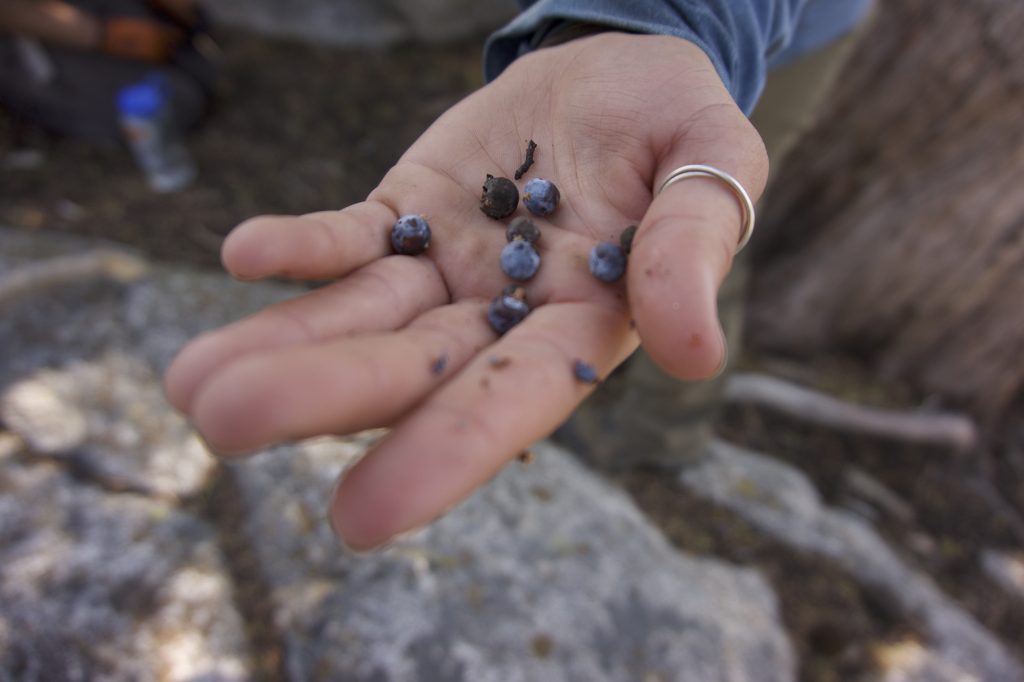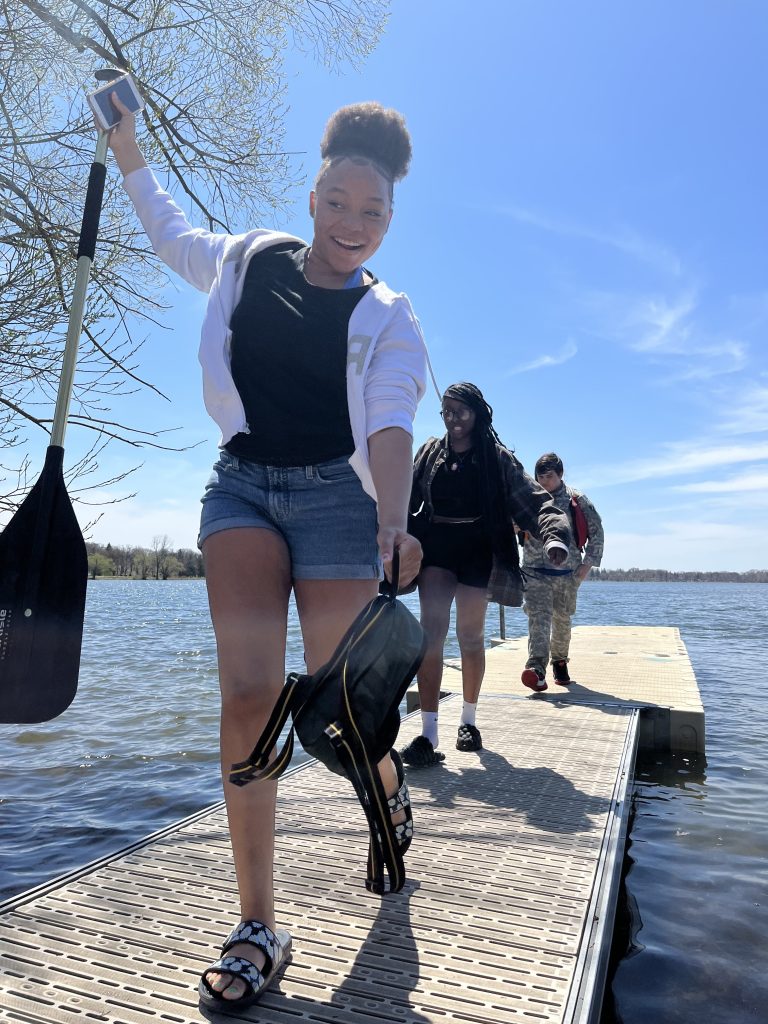Celebrating and Stewarding a Sense of Place on Earth Day

Written By Fred Sproat, National Program Director
April 25, 2023
In the middle of a cascading waterfall running full throttle with spring snowmelt is a tenacious tree whose roots are sunk deep in a crack in the rocks. I keep tabs on this tree throughout the year; watching the frigid snowmelt slowly recede leaving the tree high and dry throughout the summer before winter comes, and the tree gets buried under snow and the cycle continues.
The scene plays out in the middle of the city where I live on a stretch of creek that briefly emerges from culverts beneath streets to run free for a mile or two. It’s not an idyllic backcountry destination that would gloss a magazine cover, but it’s where my daughter first differentiated bird calls as a “caw caw” or “tweet tweet” and watched a woodpecker go, “peck peck peck”. The ability to have such routine encounters with nature reminds us that nature doesn’t only exist in far flung locations, but is all around us and can be experienced in a multitude of ways that meet our needs and moods on any given day.
Local green spaces with fewer barriers to access allow more people to spend time outside in exciting ways that you might see on a remote stretch of trail in a wilderness area hours away. Our shared green spaces remind us that being outdoors isn’t always about covering miles and going for the grandiose overlooks, but is about connecting with our community and ourselves. The dog park, picnic area, playground, and beach are all places to build community and enjoy the first warm day of summer or share a meal, laugh, or play in the mud. It’s sharing hot drinks in the parking lot after a ski or cooling off in the water after a run or bike ride. I think of my friend Martin who, if it weren’t for walking our dogs in the same park on the same shared schedule, I’d never have met. Our friendship is rooted in an appreciation for this small slice of nature.

In Minneapolis BCM youth participants meet at Lake Nokomis, a city park not far from the airport, where they learn the fundamentals of canoeing before heading north to the Boundary Waters later in the summer. For one youth participant the canoe clinic was also an opportunity to experience Lake Nokomis for the first time and learn it was a place she could get back to on her own; a bus ride away from her home. While it may be difficult to return to the wild places where our weeklong expeditions occur, I’m proud of the fact that BCM can introduce youth to outdoor spaces close to home in all program regions that they can more easily return to on their own or with friends and family and create their own experiences. What shape these experiences take is hard to know and not something we want to define or prescribe. I hope that by incorporating connections to self, community, joy, and nature into all our programs alumnus’ perspectives that about how, why, and where to spend time outside can be as broad as how we define nature.
Our cities’ green spaces, parks, bike paths, and undeveloped stretches of waterfront should not similarly be confined to a single identity or idea. They deserve our consideration and recognition for what they hold; the opportunity to see the ordinary as extraordinary and to develop a sense of place that can physically, mentally, and emotionally ground us on a regular basis.
It’s easy to overlook or take for granted the ordinary things we experience on a routine basis. They blend into the background and only once they’re gone do we sometimes realize what we’ve lost. So, it feels appropriate this Earth Day and spring to think about a renewed perspective on the value and care the green spaces and parks close to home deserve and need.
There’s no one way to give these spaces some love. It could be joining an organized Earth Day event like GroundWork Richmond’s Earth Day Celebration on The Greenway Trail or simply picking up trash left by others. Ultimately these acts improve everyone’s experience in that space and I believe help create a feedback loop that inspires others to find their own ways of being a steward.
If we want folks to see themselves as intricately connected to the earth and recognize their role in its overall wellbeing, let’s first encourage building connections with those places they can touch, feel, and experience in their own backyards.